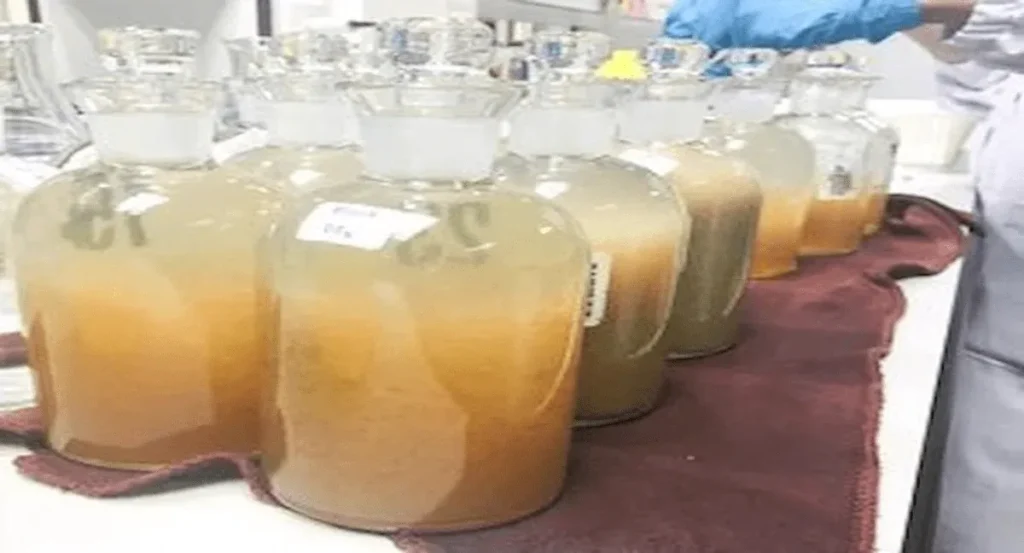High levels of Biological Oxygen Demand (BOD) in wastewater pose significant challenges to both environmental protection and industrial compliance. Increased BOD levels indicate the presence of excessive organic matter in water bodies, which can deplete oxygen, harm aquatic life, and disrupt ecosystems. Hence, it is crucial to think about how to reduce BOD in wastewater not only for regulatory adherence but also for promoting sustainability in water management practices.
Being well-known for offering wastewater treatment solutions, here we have shared innovative ways to help industries effectively tackle this pressing issue.
What is BOD in Wastewater?
BOD stands for Biological Oxygen Demand, a measure of oxygen amount required by microorganisms to decompose organic matter in water. It serves as a key indicator of wastewater pollution, reflecting the potential impact of untreated wastewater on the environment. High BOD levels often lead to oxygen depletion in receiving water bodies, resulting in the death of fish and other aquatic organisms. Thus, treating wastewater to lower BOD before discharge is essential for protecting water quality and ensuring compliance with environmental regulations.
Biological Methods for Reducing BOD
What is Biological Wastewater Treatment?
Biological waste water treatment utilizes microorganisms, such as bacteria and protozoa, to break down organic matter in wastewater. These microorganisms metabolize organic compounds, effectively reducing BOD levels and improving water quality. The biological process wastewater treatment is a natural and effective method of treating wastewater that makes it a popular choice in many treatment facilities. This wastewater treatment method can be applied in various settings, including municipal wastewater treatment plants and industrial effluent treatment facilities.
Key Biological Methods
Activated Sludge
This method involves aerating wastewater to promote the growth of microorganisms that consume organic matter. The resulting mixture is then settled, allowing treated water to be separated from the sludge. Variants like the Membrane Bioreactor (MBR) combine biological treatment with membrane filtration for treatment efficiency and produce high-quality effluent.
Trickling Filters
Wastewater is spread over a bed of media, where microorganisms attach and form a biofilm. As wastewater trickles over the media, the microorganisms break down organic pollutants. This method is particularly effective for smaller treatment facilities and is known for its low operational costs and simple maintenance.
Bio Culture for Wastewater Treatment
The use of specialized bio cultures can improve the effectiveness of biological processes for faster and more efficient BOD reduction. These cultures are tailored to target specific types of waste, improving treatment performance and allowing for the adaptation to varying wastewater characteristics. Amoda Chem also offers competitive bio culture for STP price, making them a viable option for various treatment needs.
Advantages of Biological Methods
Biological methods are environmentally friendly, promoting natural processes without the need for harsh chemicals. They are particularly effective for long-term BOD reduction that makes them a sustainable choice for wastewater treatment. Additionally, biological methods can help maintain the ecological balance of receiving water bodies. Amoda Chem provides effective bio culture solutions for wastewater treatment to help industries improve their treatment processes.
Chemical Methods for Reducing BOD
What are Chemical Wastewater Treatments?
Chemical methods involve the chemical usage to break down or remove pollutants from wastewater. Common chemical treatments include coagulation, flocculation, and oxidation. These processes help to destabilize and aggregate particles, facilitating their removal from the water. Here, ETP chemicals suppliers play a crucial role in providing the necessary chemicals for these treatments to ensure effective results in diverse situations.
Key Chemical Methods
Coagulation
Chemicals are added to wastewater to neutralize charges and form larger particles, which can then be removed by sedimentation or filtration. Common coagulants include alum and ferric chloride, which are effective in removing suspended solids and organic matter.
Flocculation
This follows coagulation and involves gently mixing the water to encourage the formation of flocs that can be easily separated. Flocculants like polyacrylamide are used to improve the aggregation of particles to improve the efficiency of subsequent sedimentation.
Oxidation
Chemicals like chlorine or ozone are used to oxidize organic pollutants, converting them into less harmful substances. This process can effectively reduce BOD levels but requires careful management to avoid harmful by-products.
Benefits and Drawbacks of Chemical Methods
Chemical methods are fast-acting and highly effective, especially for extreme contamination scenarios. They can provide quick results that make them invaluable in situations requiring immediate treatment. However, they often come with higher operational costs and potential environmental impacts, such as chemical residues that can harm ecosystems. Moreover, the handling of hazardous chemicals requires stringent safety measures that add to the complexity of operations.
Comparing Biological and Chemical Methods
Effectiveness
Both biological and chemical methods have their strengths in reducing BOD in wastewater. Biological treatment in wastewater treatment excels in natural environments and is better suited for moderate BOD levels, while chemical treatments can provide rapid results for heavily contaminated water.
Environmental Impact
Biological methods are more sustainable, promoting ecological balance and minimizing adverse effects on the environment. In contrast, chemical methods may pose environmental risks due to chemical usage and residual pollutants.
Cost and Long-Term Viability
In the long run, biological methods are typically more cost-effective, with lower operational and maintenance costs. While chemical methods can offer quick solutions, they can also lead to escalating costs and environmental liabilities.“Both biological and chemical methods have merits in reducing BOD in wastewater. However, biological methods are often more sustainable and cost-effective, making them the preferred choice for long-term wastewater management. Being one of the leading ETP chemical suppliers, we provide effective bio culture for wastewater treatment and customized wastewater treatment solutions. If you’re looking for expert assistance with your wastewater treatment needs, choose Amoda Chem.”


